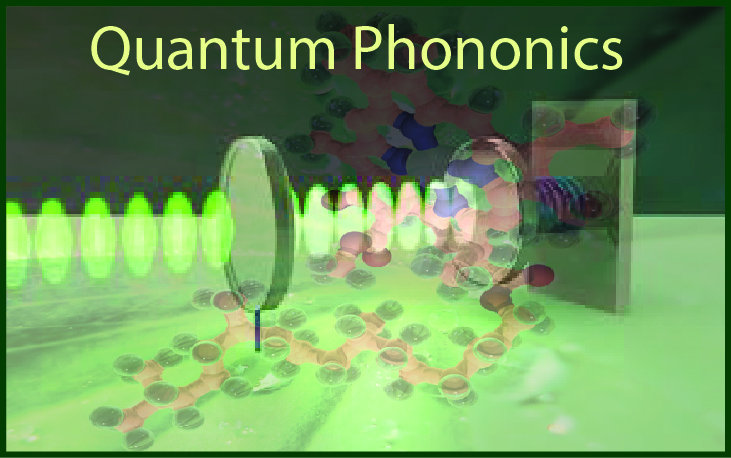In the vast landscape of contemporary physics, phonons emerge as enigmatic entities, weaving together the realms of solid-state physics, quantum mechanics, and materials science. To the uninitiated, phonons may appear to be abstract constructs; however, they are fundamental quanta that play pivotal roles in the vibrational dynamics of crystalline solids. This exploration into the nature of phonons will not only enhance your understanding of these fascinating quasiparticles, but may also instill a sense of wonder regarding the underlying principles that govern our physical world.
The term “phonon” is derived from the Greek word “phonē,” meaning sound. Physically, a phonon is defined as a quantized mode of vibration occurring in a rigid crystal lattice. As such, these elemental excitations behave much like particles, despite being massless, existing within the framework of quantum mechanics. Phonons can be classified into two principal types: acoustic phonons and optical phonons. Acoustic phonons, akin to sound waves traversing through a medium, are characterized by their longitudinal and transverse modes of oscillation. Conversely, optical phonons involve vibrations of the atoms within a unit cell of a crystal lattice in a manner that causes adjacent atoms to move in opposite directions, revealing the intricate interplay within the lattice structure.
The discovery of phonons emerged as a consequence of the need to comprehend thermal and electrical properties of materials at the atomic level. All matter, in its essence, is composed of atoms that are in a continuous state of vibration. These vibrations give rise to phonons, which can be thought of as discrete packets of vibrational energy. This analogy enables an understanding of how phonons can contribute fundamentally to phenomena such as thermal conductivity and specific heat, serving as carriers of thermal energy through materials.
Thermal conductivity, a measure of a material’s ability to conduct heat, heavily leans on the behavior of phonons. In crystalline solids, the organized structure allows phonons to propagate with relative ease. When enough energy is supplied to a crystal lattice, the resultant excitations manifest as phonons that migrate through the material, enabling the transference of thermal energy. As the temperature increases, the population of phonons also elevates, leading to enhancements in thermal conductivity. However, this is intricately tied to the scattering mechanisms within the material, as phonon-phonon interactions, impurities, and defects often impede phonon flow, thereby reducing thermal efficiency.
The concept of phonons extends beyond thermal dynamics and into the realm of electrical conductivity as well. In semiconductors, the interplay between phonons and charge carriers is profoundly intricate. Phonons influence the scattering rates of electrons, thus impacting the efficiency of electrical conduction. Additionally, phenomena such as piezoelectricity arise from the interaction between phonons and electric fields, positioning phonons as pivotal players in the exploration of next-generation electronic and optoelectronic devices.
Moreover, the advent of quantum mechanics has heralded a transformative perspective on phonons, enabling researchers to probe into their quantum nature. Phonons exhibit unique properties such as Bose-Einstein statistics, akin to photons, where multiple indistinguishable phonons can occupy the same quantum state. This aspect becomes particularly intriguing in the context of low-temperature physics, where quantum behaviors become pronounced, demonstrating phenomena such as phonon condensation in specific scenarios.
The concept of phonon dispersion relations elucidates the relationship between energy and momentum of phonons, effectively plotting their behavior in various materials. The dispersion curve illustrates how the energy of phonons varies with their wavevector, providing insights into the vibrational properties of materials. Anomalies in the dispersion spectrum can yield critical information regarding phase transitions, revealing changes in the material structure and revealing exciting avenues of research in condensed matter physics.
Phonon-based technologies and applications occupy a burgeoning sector in modern science. Acoustic waves generated by phonons underpin technologies like ultrasound imaging and are nurtured by advances in nanostructured materials like graphene. Furthermore, the burgeoning field of phononics, which harnesses the properties of phonons for information processing, offers a promising frontier. Here, devices that manipulate phonons for data transmission and computation may eventually rival traditional electronic components, potentially spurring a revolutionary shift in technology.
The interplay between phonons and other quasiparticles, such as electrons and magnons, further deepens the complexity of physical systems. For instance, the coupling between phonons and electrons gives rise to phenomena like superconductivity, where phonons facilitate the binding of electrons into Cooper pairs, leading to frictionless flow of electric current. Understanding this coupling can unravel the mysteries behind high-temperature superconductors, unlocking pathways for advanced materials with revolutionary implications.
In summation, the world of phonons beckons exploration with a promise to shift the prevailing perspectives on material behavior and interaction. They are the quantum whispers of vibrating crystals, embodying a synergy of sound, heat, and information. As the boundaries of our understanding expand, phonons will continue to unveil new realms of physics that intertwine with myriad aspects of technology, materials research, and theoretical inquiry. With ongoing advancements, the intimate dance of phonons may soon orchestrate the symphony of technological innovation in ways previously unimagined.












